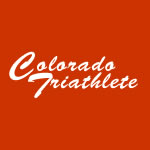The Logistics of a Long Run When Aid is Mandatory
By Adam Hodges
October 29, 2011 (Boulder, CO) — Thanks to bike jerseys with pockets and bikes with water bottle cages, staying hydrated and fueled during long bike rides tends to be a fairly straightforward task. In contrast, figuring out how to stay hydrated and fueled during long runs always seems to be a challenge. Below are the pros and cons of a few long run hydration strategies. Experimentation is the key to finding the strategy or strategies that work best for you given the type of run, terrain and weather conditions.
Multiple loops around an “aid station”
This solution tends to work best if you can find a route of about 3 to 5 miles that loops around a trailhead or parking lot. Keep a cooler with sport drink, gels and energy bars in the car. Make sure the supplies are laid out and easily accessible so that you can quickly grab what you need after each loop of the run. This solution seems to be the easiest without requiring you to carry anything as you run—and in that regard, it mimics race day conditions where you are allowed to focus simply on running. A drawback of this solution is that it might be difficult to find a route of an appropriate distance. A long loop is great for mixing up the scenery and terrain, but leaves you without frequent aid. On the other hand, a short loop provides frequent aid but can get a bit monotonous. Aim for a route that will allow you to pass by the “aid station” every half hour—more or less depending upon weather conditions and personal needs.
Pre-positioning aid along the route
Like the multiple loops around an “aid station” strategy, this solution also frees you from needing to carry anything along the route, which again mimics race day conditions. Prior to the run, stash water bottles along the route while biking or driving the course. Instead of being tied to a single loop, this strategy affords you a greater home range over which to travel during the long run. Plus, you can leave aid exactly where you want/need it, such as placing more aid over the last half of the run. However, more time is required pre- and post-run to deal with the logistics. Be sure to mark and remember well the “aid station” locations; and don’t litter! Be responsible with any empty water bottles you leave along the way—stash them as strategically as you stashed the full ones and return to pick them up after the run.
Using a hydration pack
To best ensure you are never far from water during a long run, simply carry it with you. While in the past, the choices runners had in this regard were limited and ill-conceived, now there are more choices than ever. A host of companies—including CamelBak, Fuel Belt, Ultimate Direction, Nathan, Salomon and GoLite—offer a wide range of hydration packs that are designed specifically to conform to the jostling demands of running. Different types of packs may be better or worse depending upon the type of course and length/speed of the run you are doing. In the next article in this series, I will review the main options for carrying water when it must be done.







